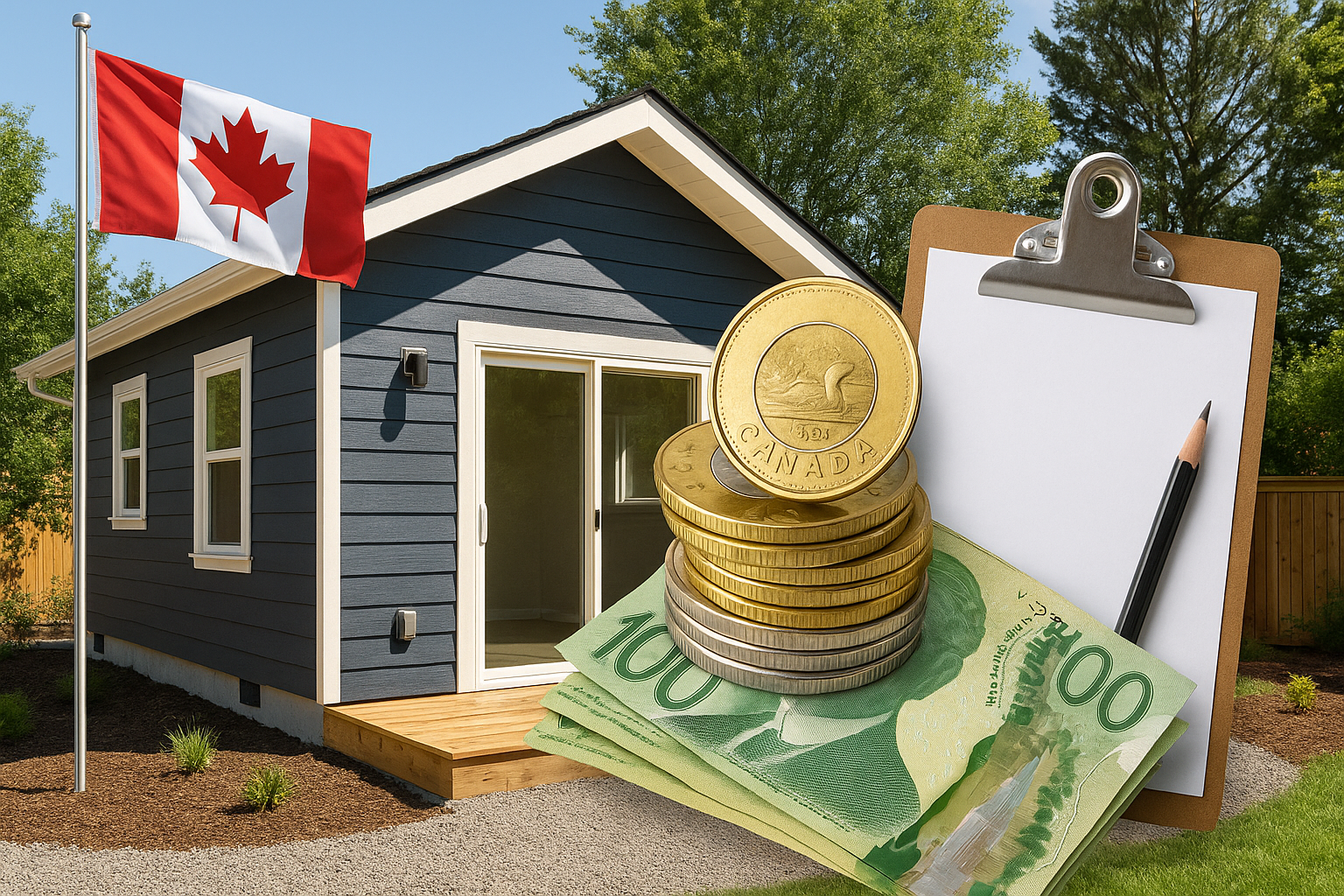
How Much Does an ADU Cost to Build in Canada in 2025?
A Complete Regional Guide to Accessory Dwelling Unit Construction Costs
Estimated reading time: 10 minutes
Key Takeaways
- Regional Variations Matter: ADU costs in Canada vary widely by province due to labour, material prices, and local permit rules.
- Critical Factors: Size, design complexity, and utility/infrastructure upgrades are key cost drivers.
- Budgeting Essentials: Always plan for contingencies and check local regulations for unexpected fees.
Table of contents
Accessory dwelling units (ADUs) are reshaping the housing market in Canada. Offering flexibility from rental income opportunities to additional living or guest spaces, ADUs provide homeowners with an attractive way to expand their property’s utility. Whether it’s a garden suite, laneway home, basement apartment, or secondary suite, the growing trend is changing the landscape.
Learn more about ADU benefits and design considerations by visiting secondary unit benefits in Canada and urban infill ADUs.
Key Factors Influencing ADU Construction Costs
The cost to build an ADU in Canada in 2025 hinges on several variables:
Size and Design Complexity of the ADU
- Larger ADUs typically require more materials and labour, driving up costs.
- Unique features such as custom floor plans, upgraded kitchens, or vaulted ceilings can add significant expense.
- Comparing basement conversions with detached builds reveals that design complexity matters.
For a thorough guide on ADU design, see ADU benefits, design, financing, and legal tips.
Materials & Labour Costs in Canada
- Regional differences impact costs, with urban centres often facing higher prices.
- Labour rates can differ dramatically between provinces such as Ontario, British Columbia, and Alberta.
- Current market trends, including labour shortages, are pushing prices upward. Refer to insights from Pro Home Contracting.
Permitting, Zoning, and Utility Infrastructure
- Local regulations influence permit fees and design requirements, sometimes adding thousands to the cost.
- Costs for connecting to water, electricity, and sewer systems also vary by location.
- Check detailed guides on Canadian ADU regulations to stay informed.
Accessory Dwelling Unit Construction Costs in Canada by Region (2025)
Each province presents its unique cost landscape:
Ontario ADU Cost
- Cost Range: $150,000 – $350,000
- High material and labour prices, particularly in the GTA and major cities.
- Strict local permitting and additional fees in heritage zones.
For further guidance, visit ADU Permitting in Ontario Guide.
British Columbia ADU Cost
- Cost Range: $180,000 – $400,000 (est.)
- Urban areas like Vancouver and Victoria face high land and labour costs.
- Environmental codes may require energy efficiency upgrades increasing the overall cost.
Learn about the process at BC ADU Permitting Guide.
Alberta, Quebec, Atlantic Canada & Prairie Provinces
- Alberta: $120,000 – $300,000 – Affordable labour and simpler permits.
- Quebec: $130,000 – $320,000 – Local rules and varying municipal fees.
- Atlantic Canada: $100,000 – $250,000 – Lower demand with fewer contractors.
- Prairie Provinces: $110,000 – $260,000 – Competitive labour rates balance material challenges.
A consolidated regional comparison table illustrates these differences clearly.
Additional Cost Considerations for Canadian ADUs in 2025
Site-Specific Costs
- Grading and Drainage: Uneven lots may require additional work.
- Landscaping: New walkways, fences, or privacy screens can add to the budget.
- Access Upgrades: Narrow city lots might need extra modifications.
Explore ADU Landscaping Ideas for Canadian Gardens for more inspiration.
Utility Upgrades & Professional Fees
- Older properties might need upgraded electrical panels, sewer lines, or water connections.
- Architectural and engineering fees can add 10–15% to the overall cost.
- Always maintain a contingency fund (10–20%) to cover unforeseen expenses.
Additional insights can be found at My Own Cottage ADU Cost Guide.
Tips for Budgeting Your ADU Project in Canada (2025)
- Obtain Detailed Quotes: Request comprehensive, line-by-line cost estimates from experienced ADU contractors. Ensure they understand local bylaws and permits by referring to tiny home builder guides in Canada.
- Consult Local Planning Authorities Early: Clarify permit requirements, development charges, and site conditions with your local planning office.
- Create a Detailed Budget: Include design, construction, permits, utilities, and a contingency fund of 10–20% for unexpected costs.
- Compare More Than Just Price: Look at contractor experience, past projects, and reviews before making your final decision.
- Utilize Incentives and Grants: Research local grants or low-interest financing options to help offset overall costs. More details are available at ADU Financing Canada Guide.
These steps not only manage costs but also help ensure a smooth project execution.
Conclusion
In 2025, building an ADU in Canada can range from approximately $120,000 to over $400,000 depending on location, size, design, and local market conditions. Understanding the key factors—from material costs to local permitting fees—is essential for accurate budgeting and planning.
By being proactive, consulting local experts, and setting aside a contingency fund, homeowners can successfully navigate this evolving market and create versatile living spaces that add long-term value.
Start by contacting your municipal planning office and obtaining detailed quotes from reputable contractors to turn your vision into a reality.
Frequently Asked Questions
1. What is the average cost of building an ADU in Canada?
The cost can vary widely based on province, design complexity, and local permit fees. In Canada, you might expect to spend between $120,000 and $400,000.
2. How do regional factors affect ADU pricing?
Labour costs, material prices, and local regulations differ between provinces. For example, urban centres like Vancouver or Toronto tend to have higher costs compared to smaller or rural areas.
3. Should I include a contingency fund in my budget?
Absolutely. It is recommended to reserve 10–20% of your budget to cover unexpected expenses during construction.
4. Where can I find more information about local ADU regulations?
Consult local planning departments and check detailed guides such as the Canadian ADU Regulations Guide for the most current information.

Leave a Reply